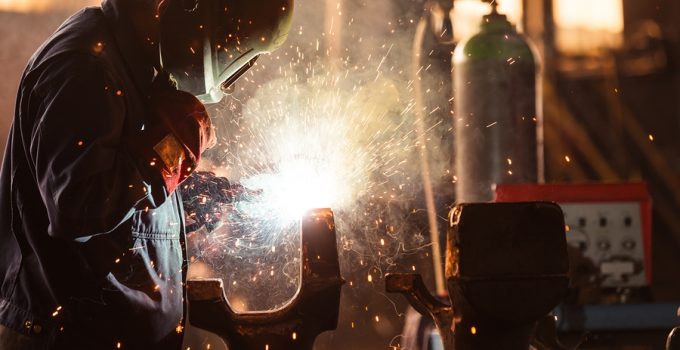Every successful workplace is built on a strong commitment to occupational safety. Our jobs expose us to many hazards, from toxic chemicals and gases to loud noises and biological agents that can be dangerous. It’s important to have experts on hand that are experts in identifying and mitigating risks.
Industrial Hygienists occupational hygienist Sydney possess the knowledge, training and experience to identify hazards in the workplace before they can cause serious health issues. These experts are vital in helping millions of workers stay safe and productive at work by carefully monitoring exposure levels and evaluating risks.
Industrial Hygiene: Art Or Science?
Any workplace that handles potentially hazardous materials must have industrial hygiene. A delicate balance is required between science and art, which requires a logical and sharp eye. Industrial hygienists evaluate the hazards in a workplace and determine if they are unsafe or uncertain. Industrial hygienists can pinpoint hazards to workers using both qualitative and quantitative analyses.
Industrial hygiene is an important component of workplace safety. It requires practitioners with both technical and artistic knowledge. These experts will then recommend ways to reduce or eliminate the danger, while still keeping workers safe. These include measures like isolating workers from hazards or changing their work patterns.
Bio Hazards
It is important for every organization to ensure the safety of their employees. The identification and mitigation of occupational hazards is an important aspect of workplace security. Occupational hazards can be classified into four different categories: physical, ergonomic, chemical and biological.
These biological hazards pose the greatest risk to workers in certain fields such as the healthcare industry and laboratory work. These hazards can include viruses, bacteria or living organisms like mold that can infect employees. Organisations need to take the necessary steps to protect employees against these hazards. This includes providing personal protective equipment and implementing strict sanitation protocol. Employers can provide a healthy and safe work environment for their employees by taking preventive steps.
Chemical Hazards
Every day, people are exposed to a variety of occupational hazards that can be harmful to their health. Chemical hazards include oil mists and vapors. You can find these substances in many workplaces, including factories, manufacturing plants, laboratories and construction sites.
Exposure to these hazards is not always immediately apparent, but it can lead to serious long-term effects for workers. These include respiratory problems and neurological damage. It is important that both employers and workers take action to mitigate and identify chemical hazards to maintain a healthy and safe workplace.
Ergonomic Hazards
Many people who are responsible for lifting or pushing heavy objects have a real concern about ergonomic hazards. Although it may appear to be a minor issue, repeated heavy lifting or pushing can cause serious injuries such as strains and sprains of the neck, back or shoulders.
These injuries can be very debilitating. They cause physical pain and discomfort, and may lead to missed workdays or a reduction in productivity. It’s therefore important to understand the risks involved with such tasks and to take measures to avoid them. For example, using proper lifting technique and taking frequent breaks to stretch or rest. This will ensure that workers are safe and healthy while completing their tasks.
Hazards to Physical Health
All employers should take workplace safety very seriously. Workers in all industries are at risk from physical hazards like noise, heat, radiation and other types of exposure. These hazards can lead to serious health problems, from cancer to hearing loss, and in some cases, even death.
Employers need to take proactive steps to protect their employees from these hazards. They can do this by implementing safety protocol, providing protective equipment and training every employee. Individually, we must speak out if there are unsafe conditions in the workplace. We should also prioritize our safety. We can all work together to create a healthy and safe work environment.
OSHA and Industrial Hygiene
OSHA is a key player in the workplace safety of employees. OSHA develops and enforces safety and health standards for workplaces, which employers must comply with. Industrial hygienists are responsible for implementing protocols and identifying hazards. They are responsible for identifying, measuring, and analyzing hazards on the job such as ergonomic, physical, chemical and biological hazards.
These professionals often consult OSHA’s PELs, NIOSH Recommended Exposure Limits, and
Industrial Hygiene Services
We are a full service industrial hygiene organization that also offers asbestos abatement and microbial control . As such, we know how important it is to ensure the safety and health of our customers and employees, in any environment. Our highly-skilled industrial hygiene consultants deliver top-notch service to meet your needs.
You can rely on us for reliable and effective solutions. Our industrial hygiene performance has been demonstrated by multiple independent studies and peer-reviewed certifications. We offer a variety of services, from asbestos removal to microbial control. We can help with all your industrial hygiene requirements.
Asbestos And Mold
Mold and asbestos are both hazardous substances which can cause serious health problems. Our team provides comprehensive services that address these problems head-on. We provide asbestos and mold removal solutions that include everything from sampling, report generation and effective protocols to removal strategies.
Air Quality
We will provide you with all the tools and information you need to improve the air quality in your home and to ensure that you and others around you live in a healthy and safe environment. Let us look after the air, and you can focus on enjoying your life.
Microbiology
The study of microorganisms is essential to the upkeep and maintenance of buildings. Microorganisms help us to understand the bacterial threats which can impact the health of the building and its occupants. We can create a sanitation plan that is tailored to the building and its equipment by identifying these potential risks.
We can also use microbiology to understand how we can promote the growth of beneficial microorganisms, which will enhance a building’s performance. Our knowledge and expertise can ensure that your building performs at its peak, living up its full potential as an organism.



